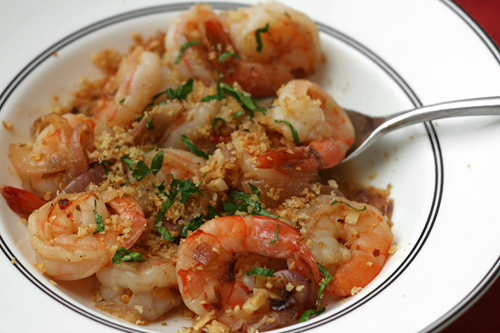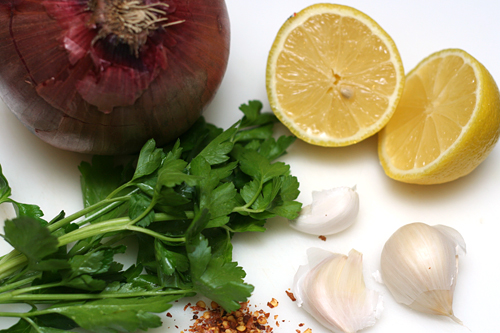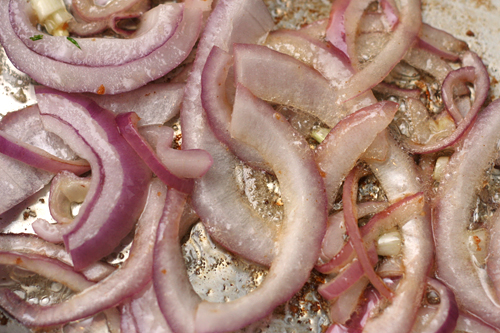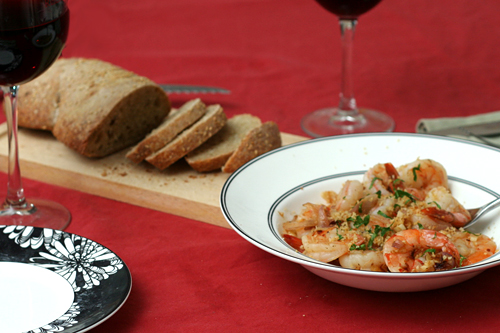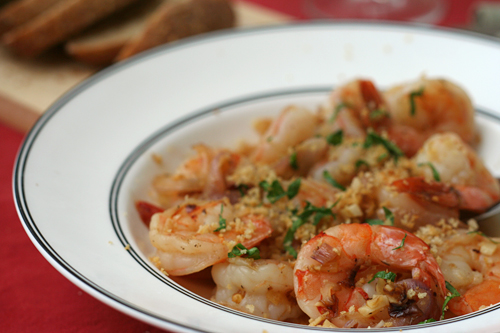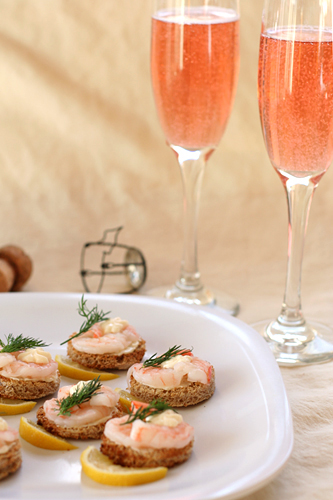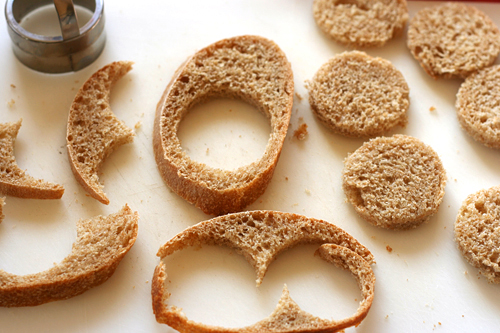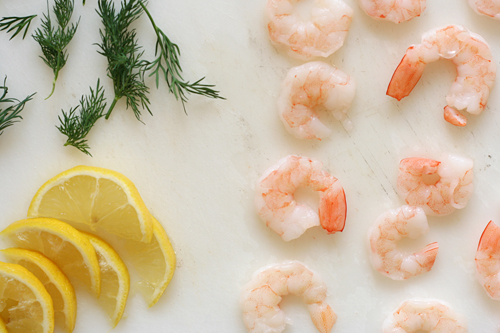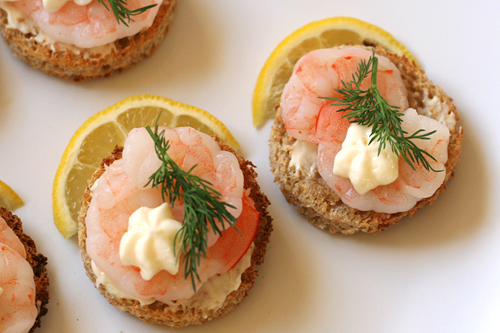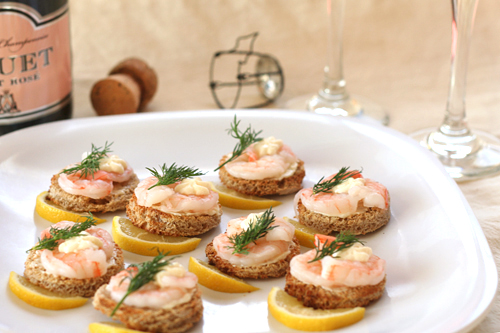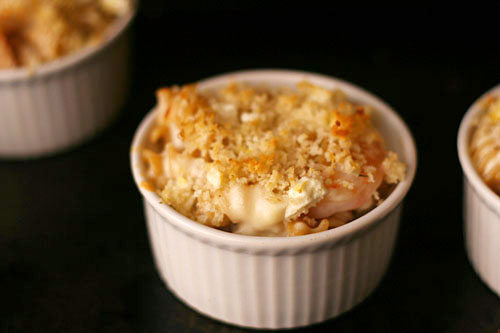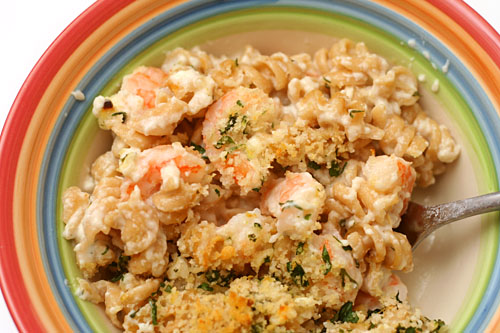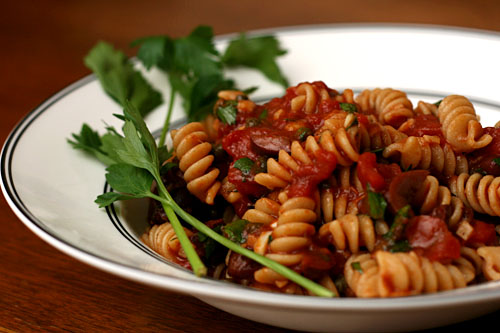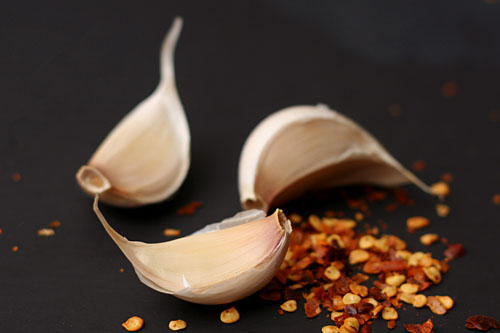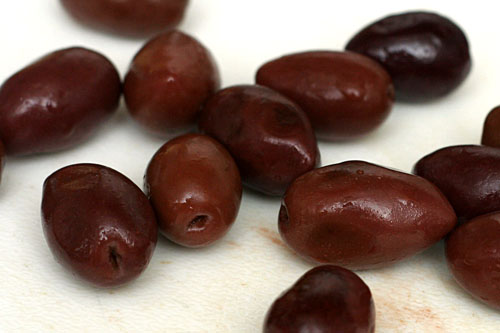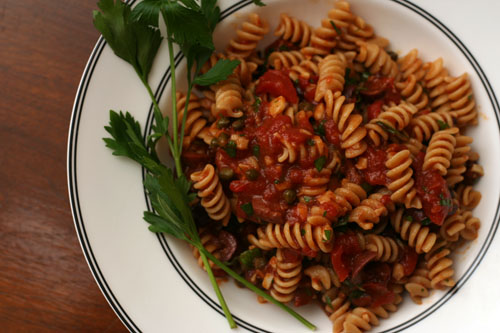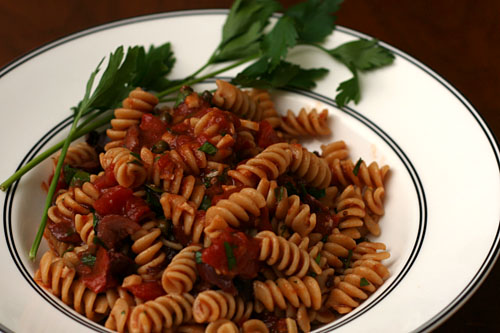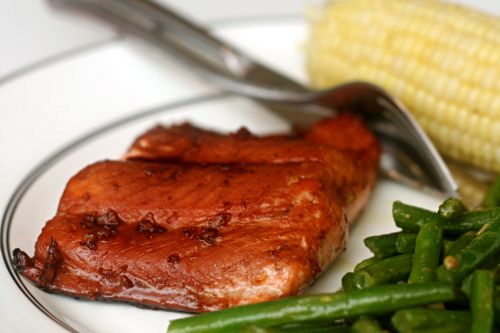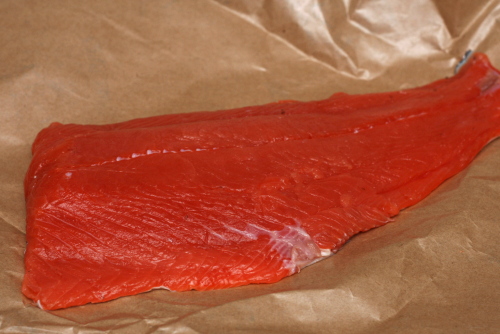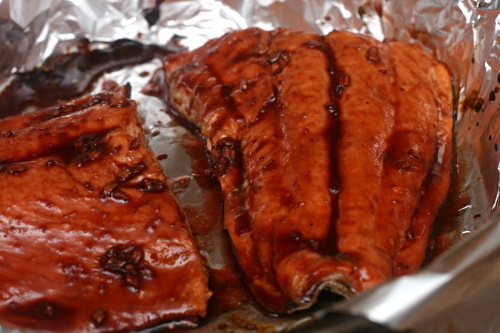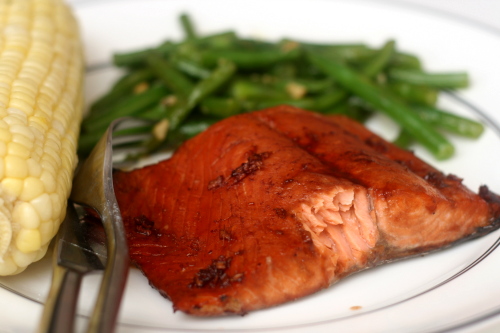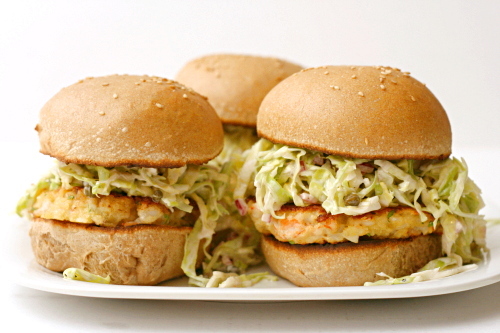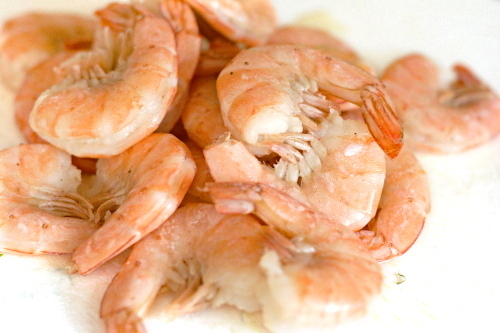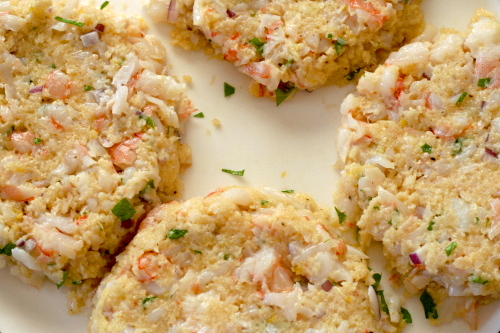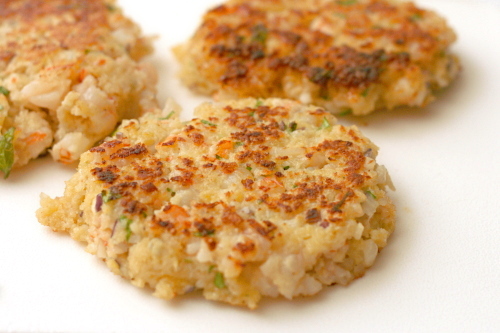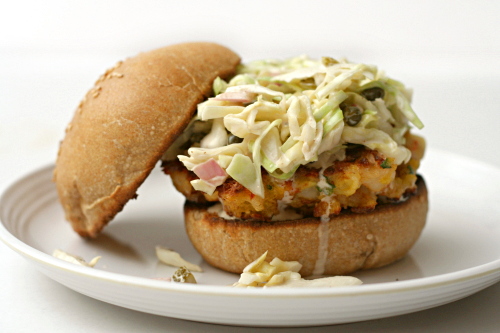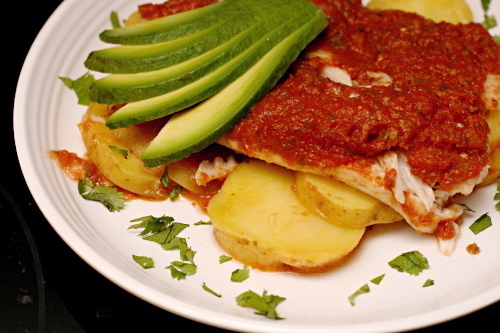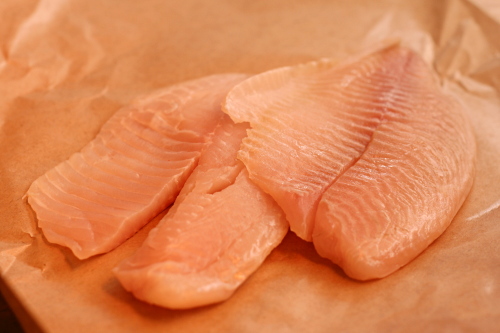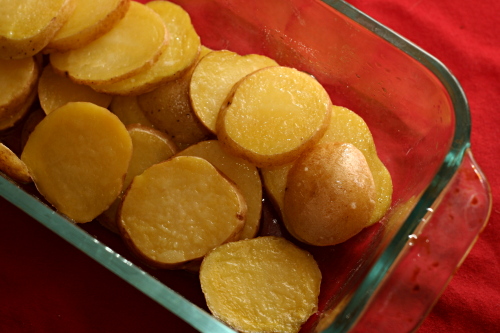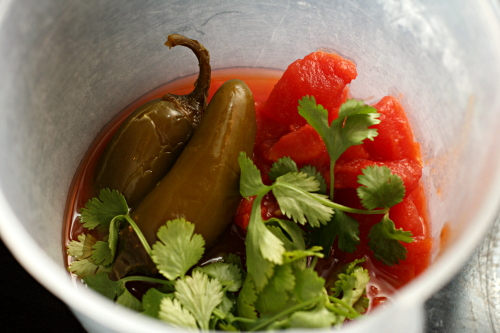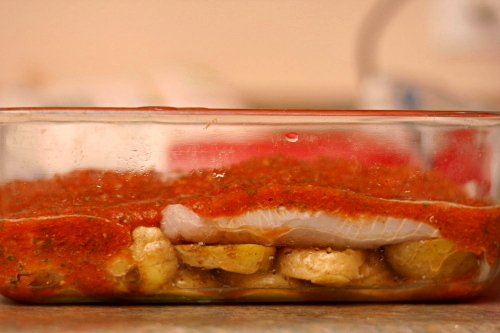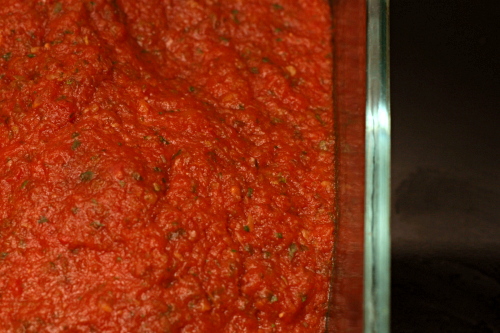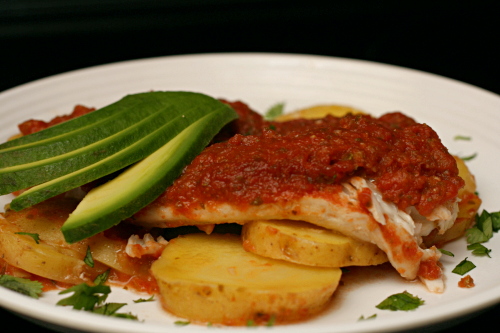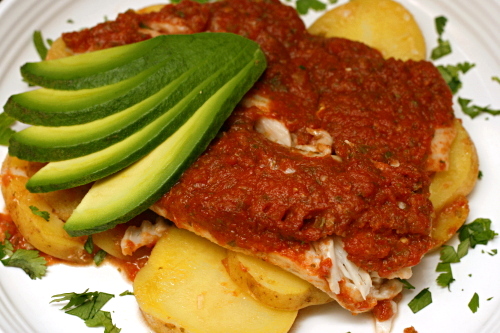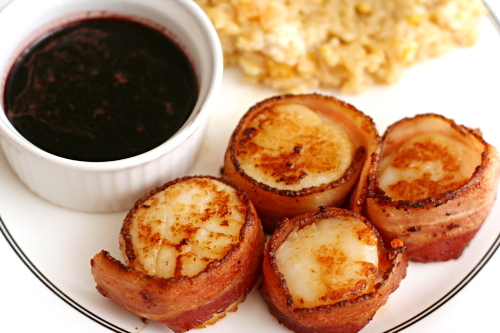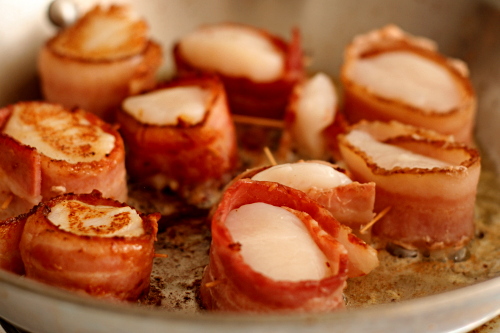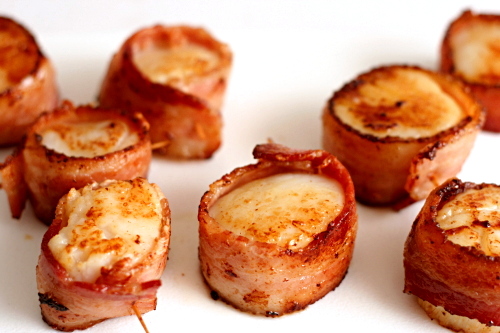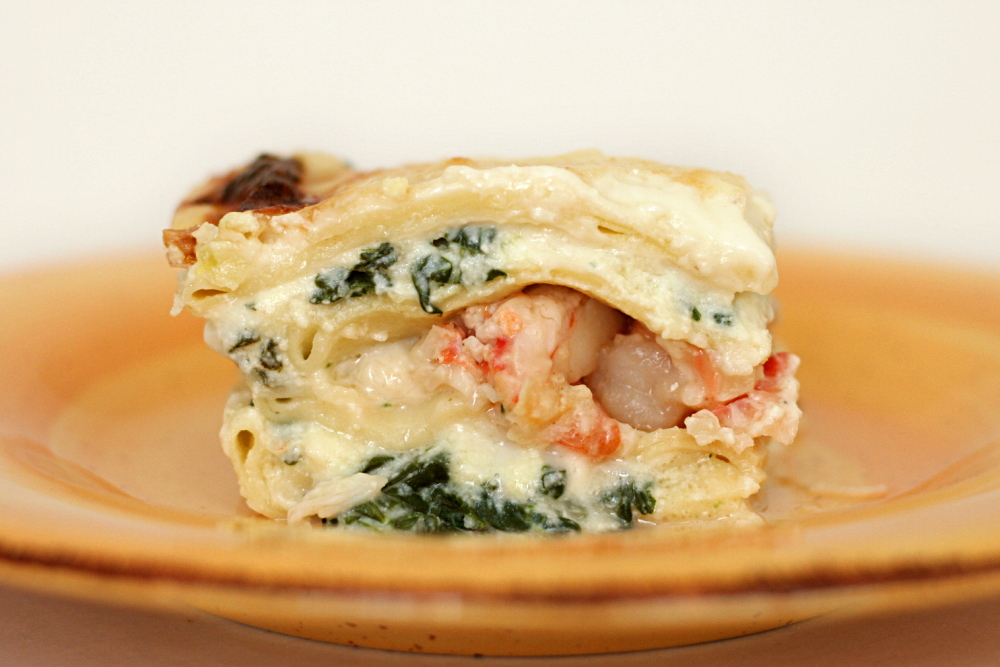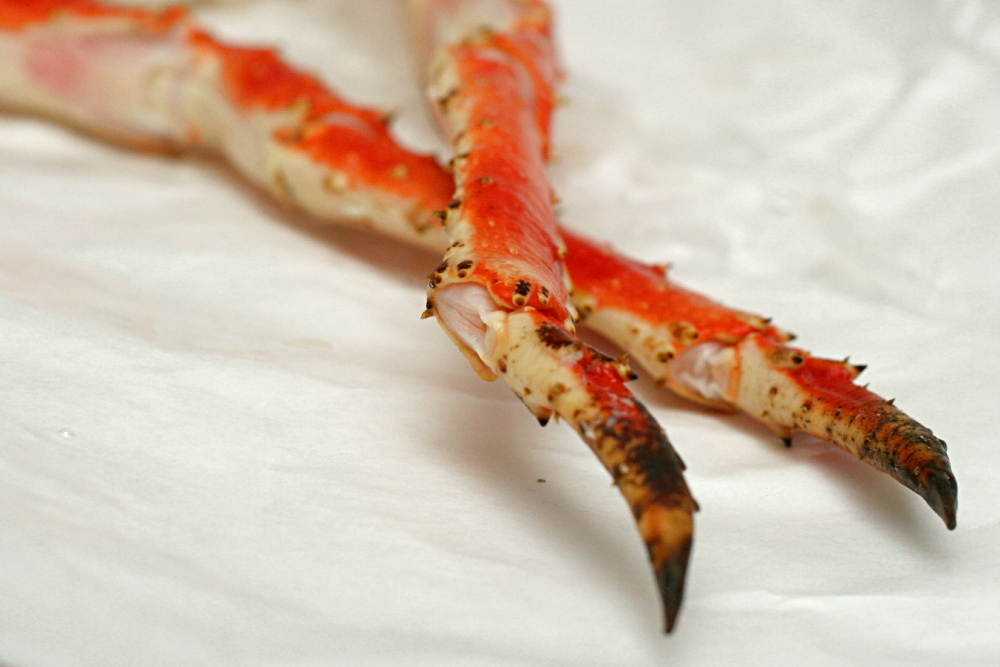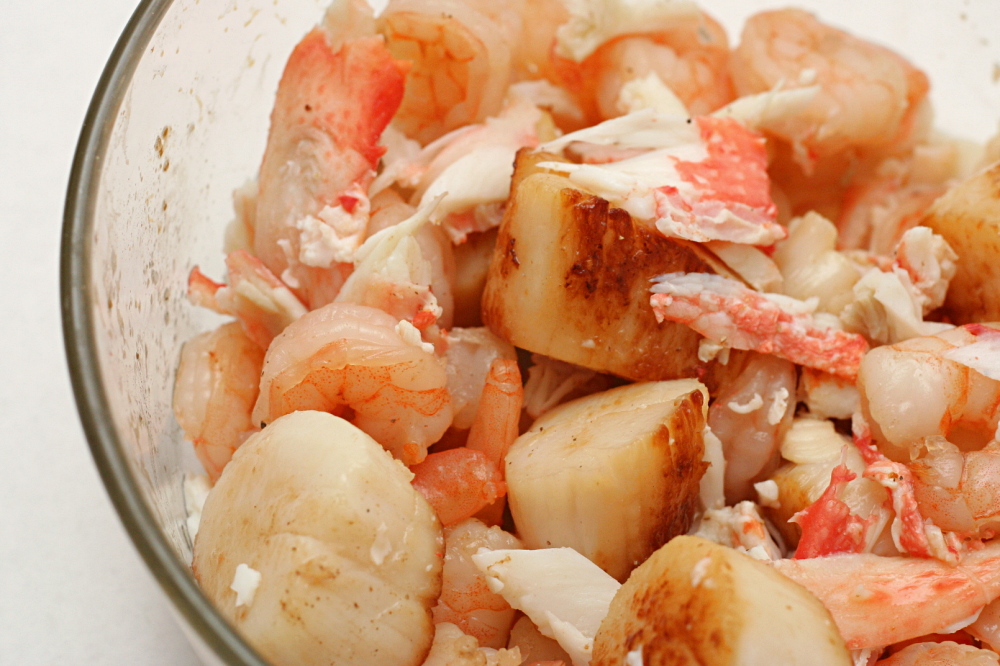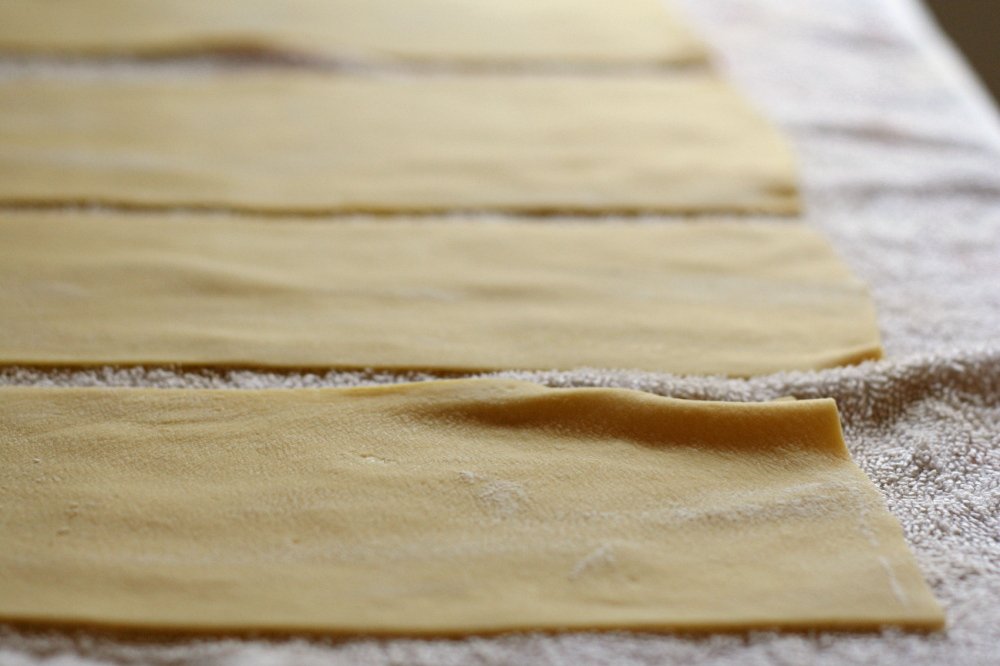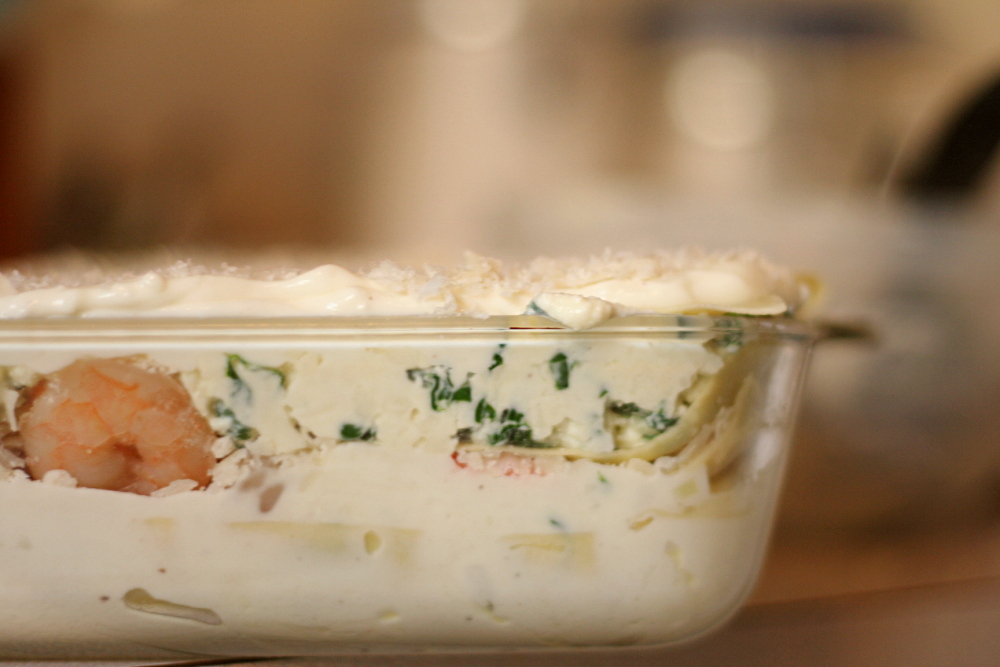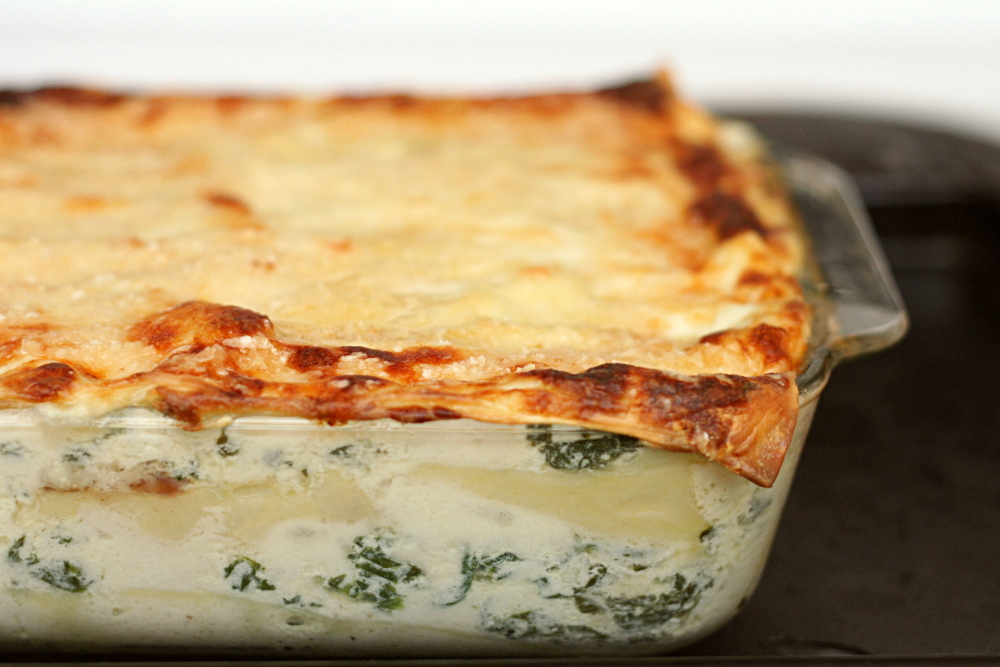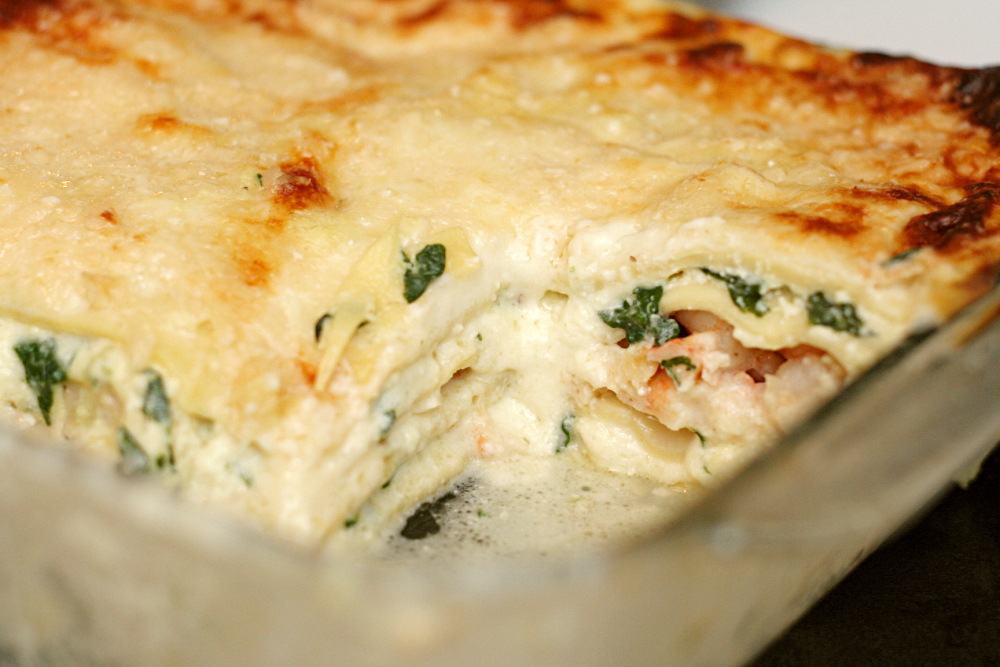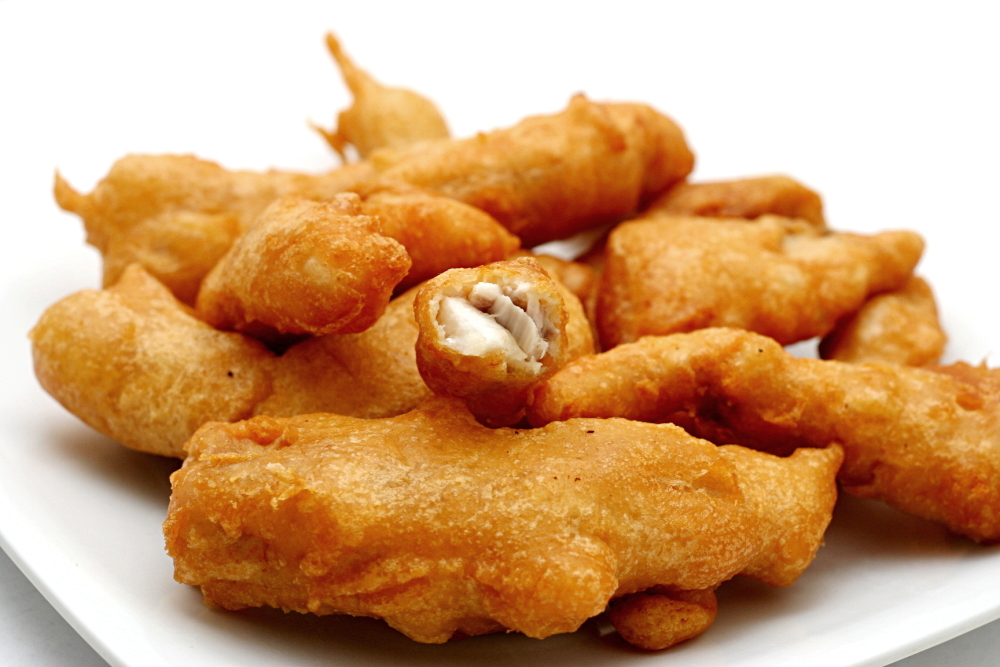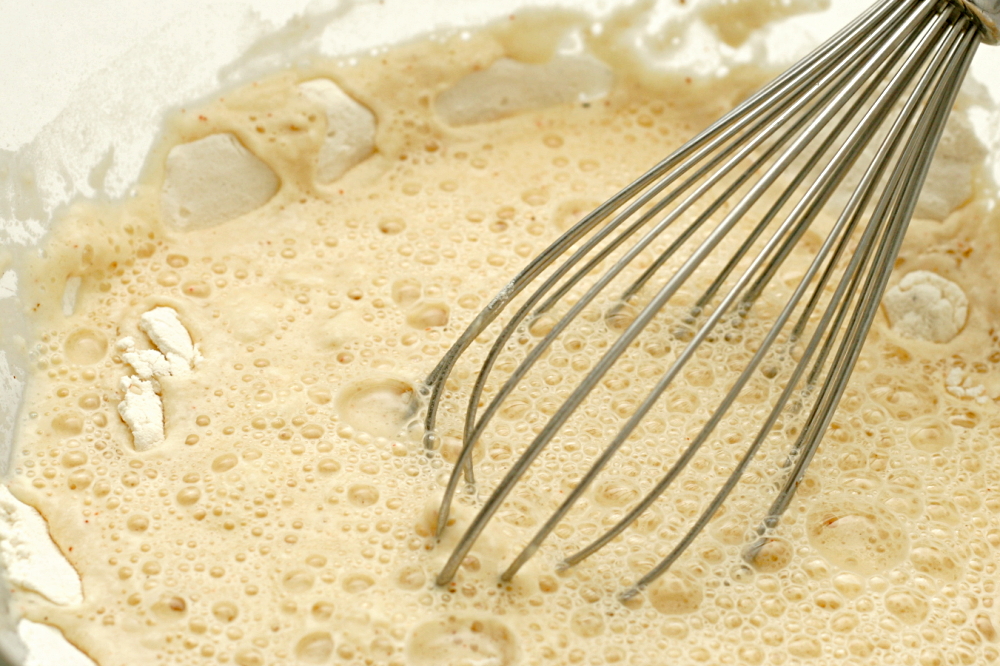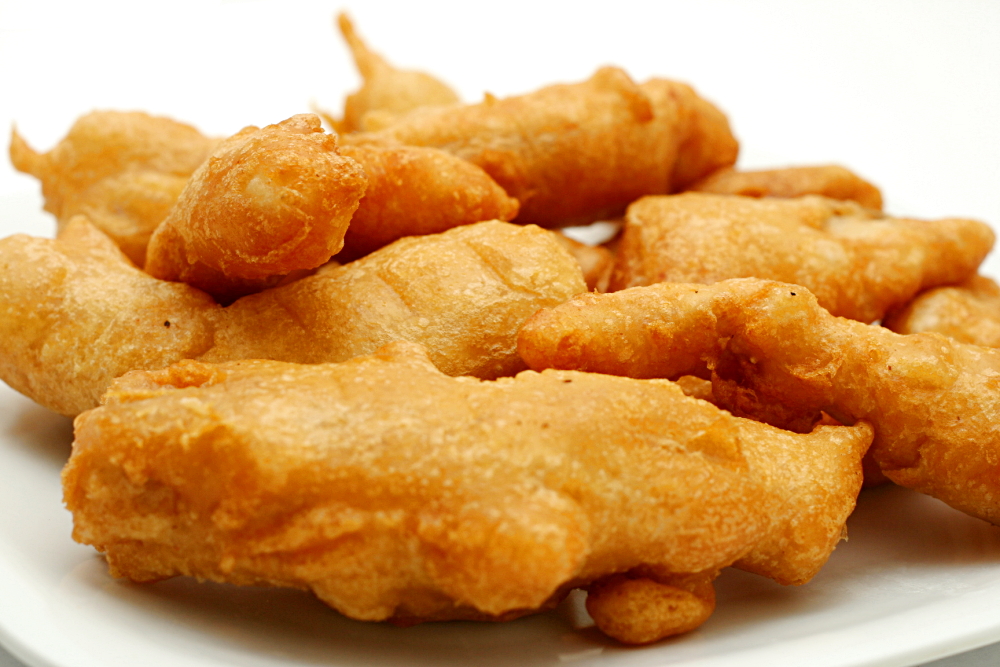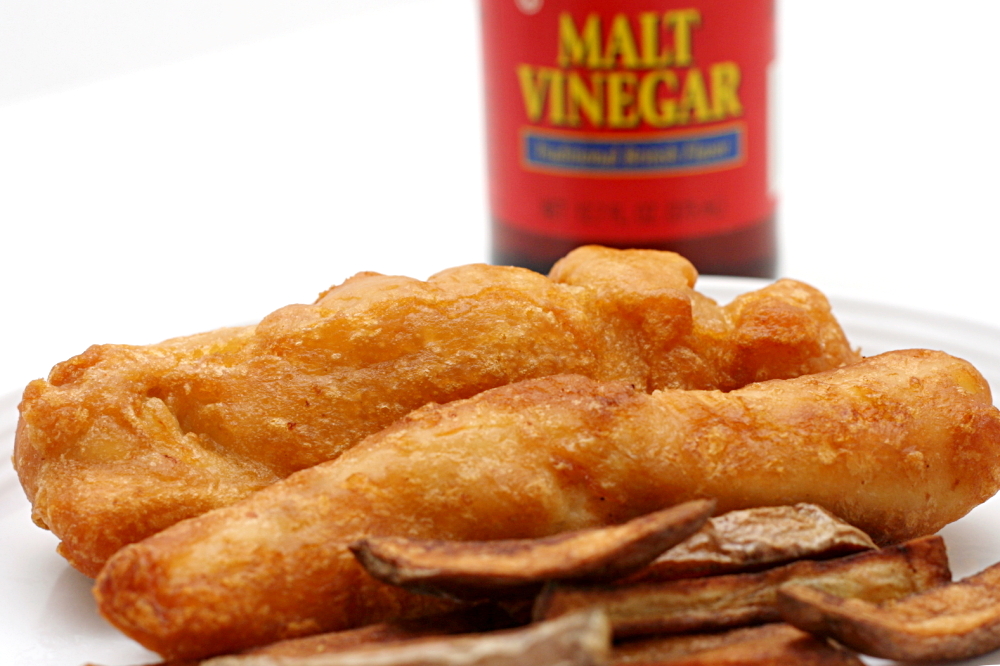I remember last semester, when I was teaching in the evenings, I had all these plans for what I wanted to do once the semester ended. I was going to organize my recipes and study photoshop and learn Italian and basically rule the world. Instead, I’ve been cooking.
So if you’re in my little town on a Saturday night, the best meal in town is at my house. There’ll be appetizers, there’ll be wine, there’ll be some sort of meaty main course, there’ll be a dessert you have no room for but can’t resist anyway. There’ll probably be bread. In between courses, there’ll be live music courtesy of Dave. You’re all invited! Just keep in mind that I live hundreds of miles from a major airport. Plus Dave thinks you’re all secretly rapists. Okay, I take it back, you’re not invited.
Which is too bad, because you’ll be missing out on some good food, the best of which I believe was this shrimp. A cross between the bright flavors of shrimp scampi and the heat of shrimp fra diavolo (“shrimp of the devil”), this fresh spicy dish was the perfect opening to a evening of cooking and eating. Around these parts, that’s just an average Saturday night.
One year ago: Whole Wheat Brioche
Three years ago: Almost No-Knead Bread
Scampi fra Diavolo (tweaked from Bon Appétit via epicurious)
3 tablespoons butter, divided
⅓ cup panko (Japanese breadcrumbs)
½ cup chopped fresh Italian parsley, divided
1¼ pounds uncooked large shrimp, peeled, deveined, tails left intact
2 tablespoons olive oil
1½ cups thinly sliced red onion
5 garlic cloves, minced
½ teaspoon dried crushed red pepper
⅔ cup dry white wine (preferably Sauvignon Blanc)
Lemon wedges
1. Melt 1 tablespoon butter in a medium nonstick skillet over medium-high heat. Add the panko and stir until it’s golden and crisp, about 2 minutes. Transfer to a small bowl; mix in 2 tablespoons of parsley. Wipe out skillet.
2. Sprinkle the shrimp with salt and pepper. Melt the remaining 2 tablespoons of butter with the olive oil in the same skillet over medium-high heat. Add the red onion and sauté until it’s beginning to soften, about 3 minutes. Stir in the garlic and crushed red pepper and sauté 1 minute. Add the shrimp and sauté until barely opaque in center, about 1 minute per side. Add the white wine and simmer until the liquid is slightly thickened and reduced, 2 to 3 minutes. Season to taste with salt and pepper. Stir in the remaining parsley. Transfer to a shallow bowl. Top with the sautéed panko and serve with lemon wedges.
